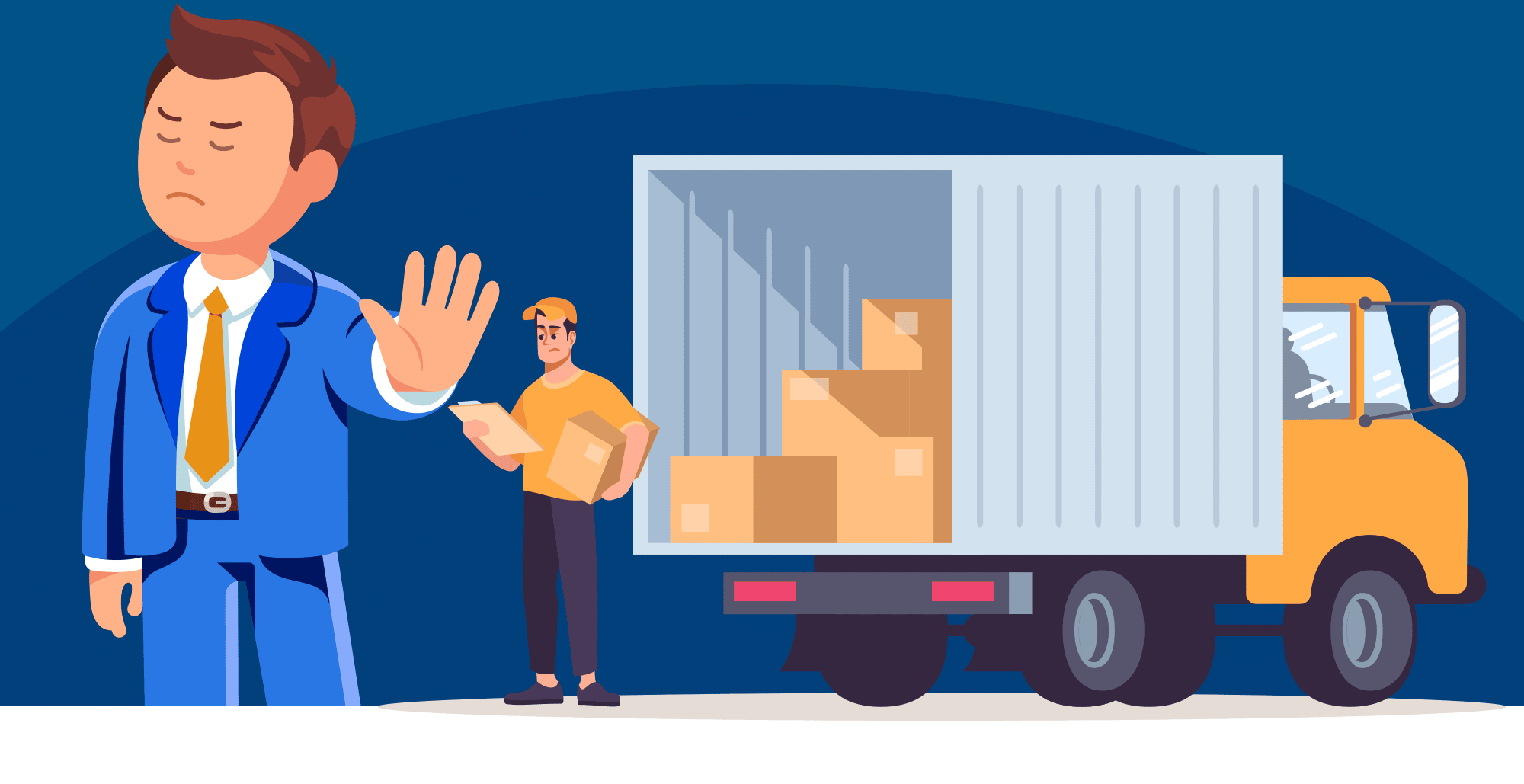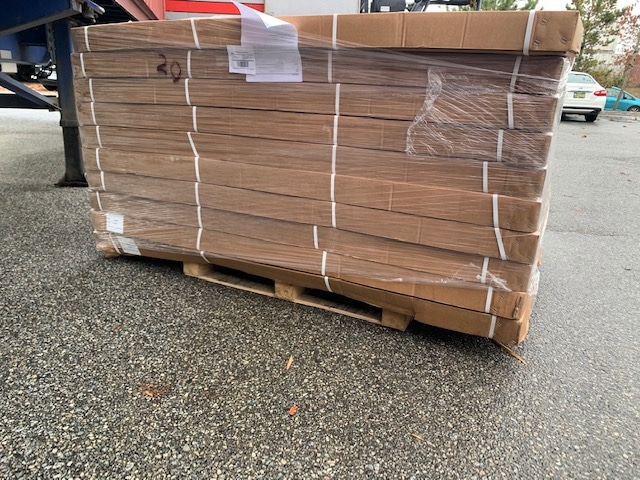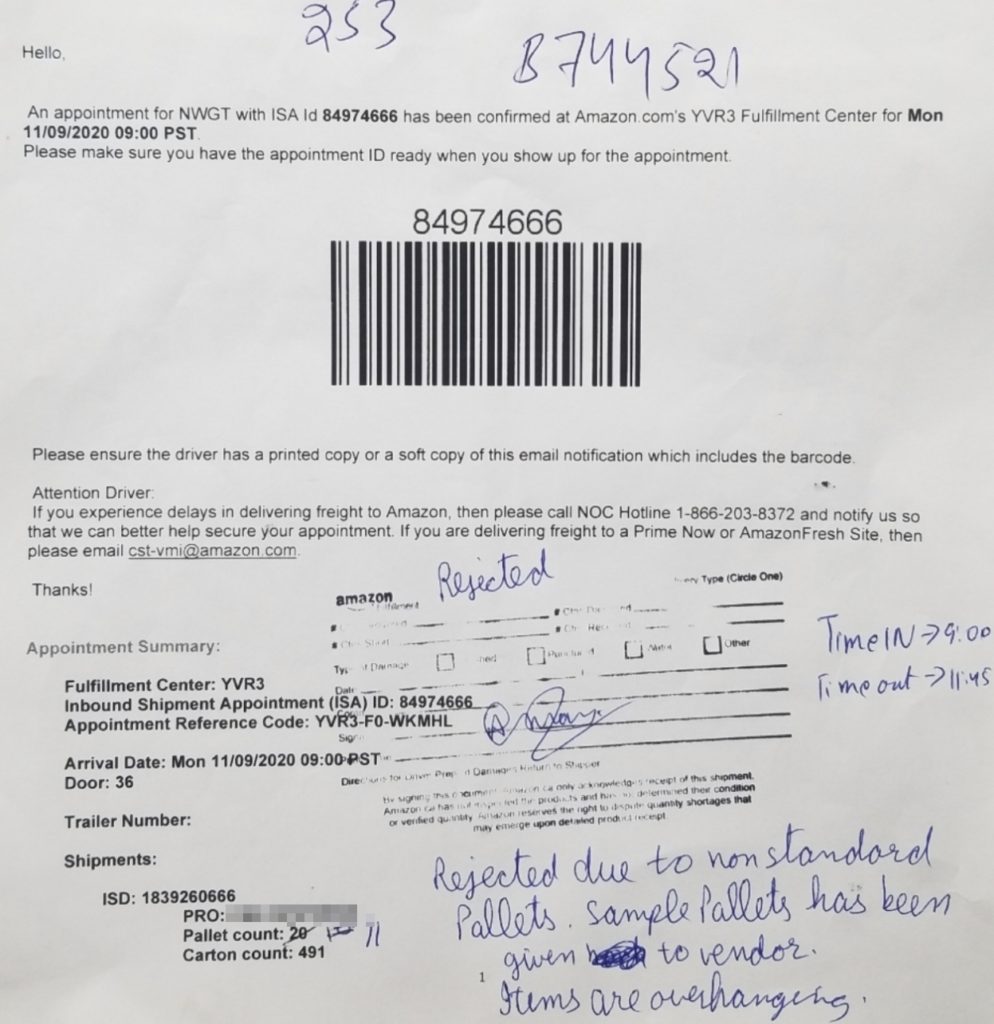The Ultimate Guide to Amazon Refused Shipments

Have you had Amazon refused shipments by an Amazon fulfillment center? In this article, we'll discuss why your shipment got refused and how you should address it.
Why Shipments Get Refused
Let's be clear – Amazon almost never rejects a partnered-carrier shipment. It happens, but after more than 5 years of doing this, I've never had a shipment refused by Amazon for a partnered carrier nor have we had any members have a partnered carrier shipment refused.
The most common reasons why a shipment gets refused by Amazon are:
- It was delivered from overseas and the duties/fees have not been paid
- The shipment didn't meet Amazon's delivery standards
- The shipment was cancelled/deleted
Let's discuss each of these three reasons.
Amazon Delivery Refused Because of Outstanding Duties/Fees
If you're delivering a package to Amazon FBA from overseas via air shipping (e.g., UPS/FedEx/DHL/etc), many times, there will be duties and/or other fees (often brokerage fees) payable upon delivery. If there is a penny payable upon delivery, Amazon will refuse the shipment. They will not pay the fees and bill you for it.
How do you solve this?
- In America, as long as your shipment is under the $800 de minimis threshold there should be no duties or brokerage outstanding upon delivery. America has an exceptionally large de minimis threshold. In other countries, the de minimis value is often well below $100, meaning almost every shipment will have duties and fees payable upon delivery.
- If your shipment is above the de minimis threshold in the country that you're delivering to, you should deliver the goods with the shipment terms DDP, meaning Delivery Duty Paid. If you're shipping UPS/FedEx etc., this means that will bill the charges to the shipper and not the receiver.
Non-Partnered Carrier Refused Shipments
Amazon non-partnered carrier refused shipments are by far the most complicated refusals. It's the most frustrating as well because Amazon has almost no leniency for non-partnered carriers. But it will accept partnered-carrier shipments no matter how many infractions that shipment has.
Let's imagine that you ship pallets with significant overhang (Amazon does not allow overhanging pallets). If you ship via Partnered Carrier, Amazon will accept the pallets and give you a warning within Seller Central almost 100% of the time. This warning, as any experienced seller knows, is fairly meaningless and won't impact your account in any way.
If you try to deliver the same pallets with a non-partnered carrier, Amazon will simply reject your shipment and turn your truck driver back. The implication of this is that you will almost certainly pay thousands of dollars or more to rework the pallets and re-deliver them. It's terrible. We've had shipments refused multiple times for tiny infractions and it's one of the most painful and expensive experiences you can have as an Amazon seller.
Why Amazon Rejects Non-Partnered Carrier Shipments
When Amazon rejects your non-partnered carrier shipments, it's almost always because of some infraction in the Amazon Vendor Shipment Preparation and Transportation Manual. The frustrating thing is that in this 34-page manual, a large percentage of all shipments are likely to infringe on something. In my experience, if a fulfillment center is facing some type of issues, which they often are, such as labor shortages, capacity issues, etc. they look for reasons to reject inbound shipments from non-partnered carriers. It's akin to going 52 MPH in a 50MPH zone.
What are the most common reasons they will reject a shipment?
- Overhanging pallets
- Pallets that are built too high
- Non-standard pallets
- Inadequate pallets
- Floor-loaded containers with inadequate clearance for staff and/or forklifts
- Mixed pallets
In my experience, palletized shipments opposed to floor-loaded shipments create the biggest cause for freight refusals. Amazon FCs are designed for maximum efficiency, meaning pallets can only be stored in a particular way. This is why overhanging pallets or excessively tall pallets are such an issue. The FC can't store these pallets without rebuilding them, which they don't want to do.

This is why it's often best to deliver your shipments floor-loaded as opposed to palletized. Contrary to popular opinion, Amazon can and will accept floor-loaded containers. The silly thing is, is that when you ship a floor-loaded container to Amazon, you are forcing them to palletize your goods so it makes little sense for them to reject pallets because they don't want to palletize the goods – one of the many contradictions at Amazon!
What Can You Do About Your Refused Shipments at Amazon?
When you get a notification from your carrier that your shipment has been refused, the first thing to do is to ask your carrier for a detailed explanation of why the shipment was refused. Unfortunately, you're almost certainly going through multiple people to get this information. The Amazon receiving team is telling the truck driver, who is telling his manager, who is telling you. And when the truck driver shows up 60 minutes late for his appointment, they might not be so eager to tell you this fact! Amazon should give the driver a signed reason for why the shipment was rejected and you should request this from your carrier.

The next thing you should do is to email the freight refusals department as Amazon and ask why your shipment was rejected. Their email is toc-ib-na-freight-refusals@amazon.com and they are very responsive. Make sure to include your FBA shipment ID and reference number in the email.
Next, you can reach out to the actual FC inbound team and request more information from them. Generally, their emails will follow the same standard address format of [FC]-inbound@amazon.com, i.e. ONT8-inbound@amazon.com.
Ideally, you will be given consistent answers that also make sense for why your shipment was rejected and you can easily rectify it and redeliver it. In my experience, if you know it is a particularly difficult time for that warehouse, i.e., around the holidays, delaying your shipment for a couple of weeks, if possible, can often result in the Amazon FC perhaps being less picky and increasing the likelihood they accept your shipment.
Amazon Shipments Refused Due to Cancelled Shipments
One of the most common reasons for the rejection of shipments as of late has been because an FBA shipment is cancelled by Amazon en route to the FC. Amazon has been aggressively cancelling shipments after 90 days as of late. Unfortunately, that 90-day window is inadequate in many cases for a shipment to be labeled in China, picked up, and delivered to America. This is a terrible situation because it can mean that you have to recreate the shipment and have it relabeled. Worst of all, the FC location for the new shipment could be thousands of miles away from the original destination!
In these cases, opening a Seller Central case will give you little support as they'll often give you a blanket canned response telling you that the shipment cannot be reopened. In these cases, often emailing oc-ib-na-freight-refusals@amazon.com and asking them to re-open a shipment can work. The shipment may not show as open within Seller Central, but your carrier should be able to make the appointment date. Once you have a scheduled carrier appointment date, you should be able to deliver your shipment, even if it shows as cancelled.
For better or worse, cancellation and non-delivery are best avoided before you attempt delivery with the following steps:
- Deliver within 90 days (duh)
- Make your carrier appointment ASAP. Shipments will not be cancelled with a carrier delivery appointment.
- Ship using Amazon Global Logistics – They'll never reject your shipments.
Sometimes you will have no other choice but to recreate your shipment and relabel it- it's a terrible situation to be in, and I can't sympathize with you enough.
Conclusion
Amazon refused shipments are one of the most frustrating things you can encounter on the platform. Most frustrating is how arbitrary Amazon can be and how inconsistent they are in terms of their treatment of partnered and non-partnered carriers.
Amazon turns a blind eye to almost all partnered carrier shipments and all shipments via their own freight forwarding service, Amazon Global Logistics (free plug for our Importing from China course which helps you get enrolled in the latter). This means you should try to deliver your shipments via one of these two methods as often as possible. When you have no choice but to deliver via a non-partnered carrier, hopefully, the advice here will help you resolve your shipment woes.
Have you had any shipments rejected from Amazon? If so, why? Let me know in the comments below.




I mistakenly cancelled the shipment while it was already collected by Amazon Partnered Carrier in UK i.e. “UPS”. Once I contacted UPS, they said that the shipment has already been delivered. Now I am worried, that where the shipment has actually gone, as its status in Shipping Queue is cancelled. What should I do now?